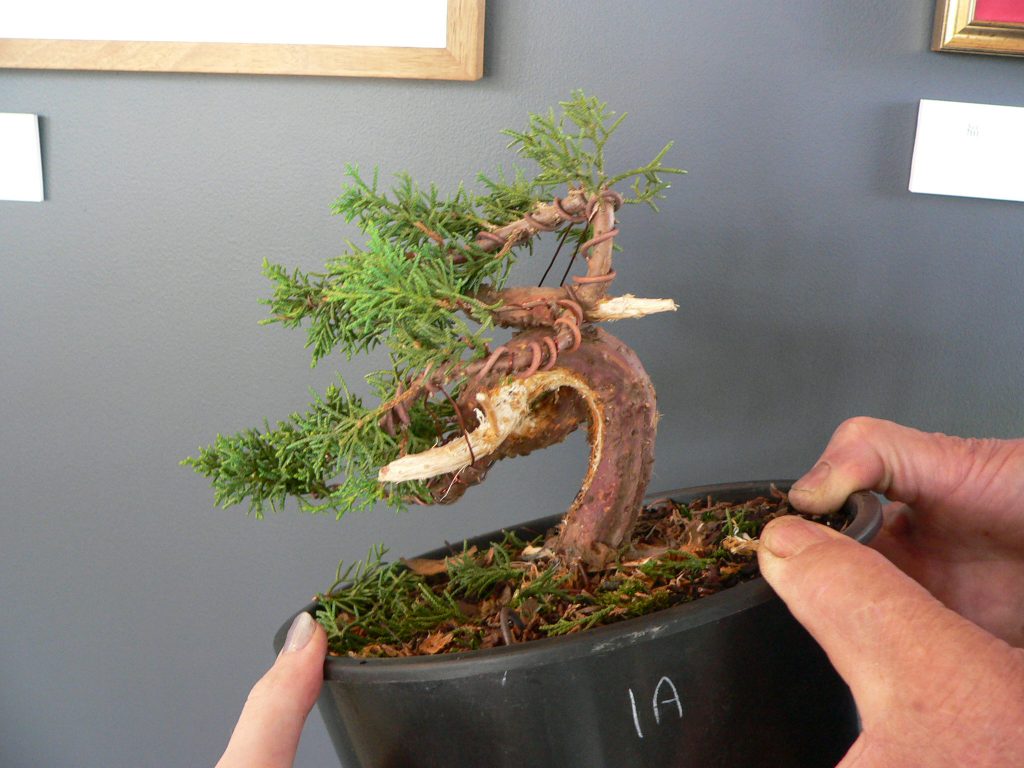The final workshop will now be under way at Bonsai week in Canberra and I’m sure today’s group will get as much out of it as we did yesterday.
Saturday’s group had representatives from across NSW and Victoria, representing a range of bonsai clubs. We presented a range of tree species and development for the visiting instructors to work with.




I had help from Sandra Grlica in the morning. She chose to work with this juniper which has a couple of tight turns in the trunk as a feature.
She identified 2 good options, both using the same side of the tree as front but with different balance for the proposed bonsai. One had more foliage to the right, the other, which I chose to follow, moved more left.
This side was chosen for the more subtle view of the tight bends. The twist will be emphasised with shari to be developed over time.



A slight change of angle to emphasise the left movement.
As with most workshop trees, branches will need to grow and fill in. Future development will probably include: widening of the shari and possible extension to emphasise the twist in the trunk; development of the apex, currently made from a single, thick branch.
Thank you Sandra for your help with this great tree.
As an interesting aside, Heike commented that she would have chosen the other side of that tree ( see picture below) as her preferred front because of the more visible bends. Another example of different preferences – not right or wrong, just different possibilities. Which side would you have emphasised?

Heike van Gunst worked with me in the afternoon session. Heike chose to style the other upright tree that I had on hand.

There are 2 opposing spiral branches at the top of the tree. Heike chose to use the other side of the tree as the front and used thicker branch going right to develop a semi cascade bonsai.

Initially the the larger sacrifice branches were reduced to jins. Later more were removed to give even more emphasis to the right movement. The resulting jins gave a natural path for a connecting shari of dead wood.


The end main part of the trunk already had nicely flowing, natural curves so did not need wiring. Remaining branches are long with lower parts quite bare of foliage but the twisted trunk means that dramatic twists in the branches to bring foliage closer to the trunk don’t look out of place.
A guy wire was enough to compress the main trunk a little more and bring the end of the trunk down just under the level of the trunk base.

Plans for future development: remove the larger root on the left when tree health and vigour makes this possible; Develop 3 main foliage areas with some spaces between; continue to develop the shari over a number of years to give more natural texture to the dead wood.
